PROTECT YOUR DNA WITH QUANTUM TECHNOLOGY
Orgo-Life the new way to the future Advertising by AdpathwaySome readers—possibly relatives of our writers—suggested starting a series of interviews with them. Who are these writers, and why do they contribute to the site without pay and with no real benefits (I’m still waiting for groupies to show up when I’m out birding)? We thought they deserved a proper introduction, so we started this series to find out.
Your Birding History And Future
How long have you been a birder, and how did you get into birding?
Since the early 1990s, after a nasty climbing accident scarred me for life. As soon as I could, I took a paddle and discovered the Danube backwaters. And from the canoe, I started to bird. I knew no other birders, and, before the Internet, I had no clue that there were other birders in Serbia. Even the first bird club was to be founded some two years later. Solo. Which in many ways describes my birding path – several decades later, I still bird solo 95% of the time.
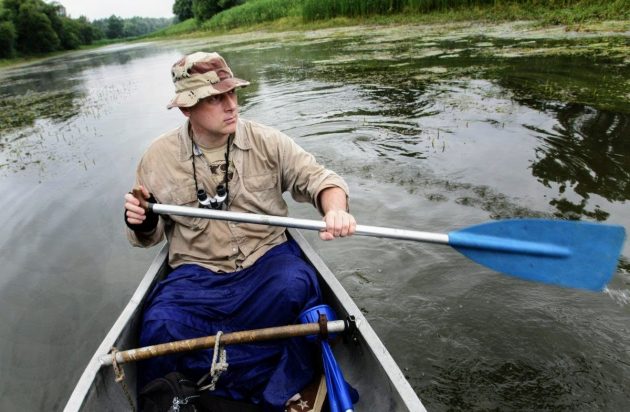
Has your attitude towards birding changed with time – for example, did it get intense, do you focus on different things now, etc.?
Like everything, it had its ups and downs. In some periods, I was more of a canoeist, in others more of a birder. At first, I focused on waterbirds and raptors. Nowadays, I bird by car and focus more on waders (shorebirds), gulls, and woodpeckers. Some 20 years ago, I was questioning the purpose of counting birds, of meticulously writing everything down, and I began to write down only the uncommon and the rare… And then came eBird, which helped me reorganize, reset, and (re)focus. And offered me a new OCD.
What were the ornithological highlights in your life so far?
Too many to mention and never enough. I birded four continents, and despite a relatively short list, only a bit over a thousand (try birding without walking and you’ll understand why), I managed to see more than half of all the bird families – now, that is a true diversity.
I’d single out the quest for the rarest owl of India, the endemic and critically endangered Forest Owlet, discovered (shot, actually) in the 19th century, only to be lost through the entire 20th century until it was rediscovered 113 years later by an American ornithologist, Pamela Rasmussen. We were in the Melghat Tiger Reserve. The reserve has more than a thousand square kilometers and only about a hundred Forest Owlets – the biggest known population anywhere in the World. And they hide among teak leaves, each twice the size of an owlet! By midday, it was getting hot. Planning to return to Chikhaldara for lunch, just a quick stop at the tourist information center to check for a guide who might be able to show us the owlet… The guide will be here by three o’clock, they say. The time quickens! To cut a long story short, in a few hours our owlet was in a high branch, with its back toward us, and rotating its head 180 degrees to keep an eye on us. Humbly, we approached on foot. The Forest Owlet was watching us – we were staring in awe. Enchanted. The bird that was lost for more than a century was looking at us!
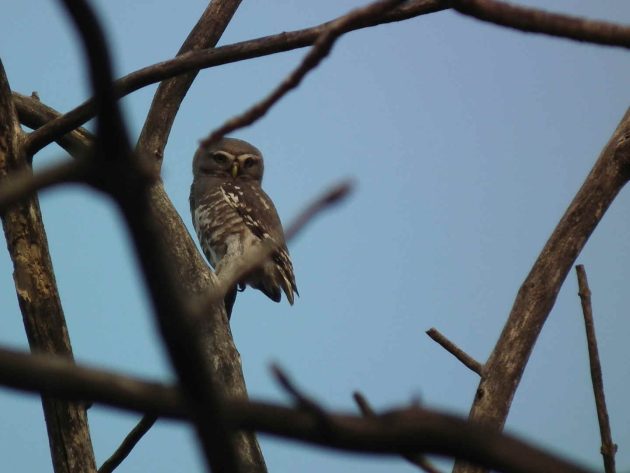
What are your plans for the next few years, as related to birding? For example, trips planned?
After more than a decade writing for 10,000 Birds, I am dreaming of publishing a book on my birding life. Trips? I intend to explore Romanian, Bulgarian, and Greek mountains, which I have only touched so far. Also, dreaming of tropical lowlands: Borneo (eastern Sabah), Chitwan National Park in Nepal and Kaziranga NP in India, Wilpattu NP in Sri Lanka, Uganda (QENP), Pantanal, Amazon, and the far corners of Costa Rica… but dreams do not count as plans. Somehow, I am not fond of tropical mountains, where the majority of endemics reside – I can feel cold at home, no need to travel to achieve that.
If you had to make a living off birding, what kind of activity would you try?
Another dream, running a small lodge, 16 to 20 beds, at some tropical sea coast, with several endemic birds nearby, e.g., Jamaica, Dominican Republic, or Puerto Rico…
Birding General Info And Advice
What are some of your birding tips for beginners?
The moment you start thinking, oh, I finally know my birds, is the moment when you know even less than when you were starting. Birds have their ways with overconfidence. And being a local eBird reviewer, I see such rarity reports, if not daily, weekly for sure.
Also, dealing with overly emotional young birders not willing to admit that they haven’t seen enough for a positive ID… (and keep in mind that your average eBird reviewer is not a trained psychotherapist). Not to mention teenage birders deliberately faking their rarity sightings, even recording bird songs in the field from one phone to another, and claiming them for their own! And that is not even half of the BS I had to deal with.
How important are apps for your birding?
I hate them… and I use (some of) them. Bipolar personality?
Strangely, I only exceptionally use eBird in the field, usually for the roadside sightings, only to record the coordinates. Otherwise, I may turn it on in the field to record the track, but not wanting to use reading glasses on and off, I enter the birds later, in front of my computer. Is that odd? Do others do the same?
Do you have any favorite birding-related media (e.g., books, podcasts, websites, magazines, videos, etc.) you can recommend?
Perhaps Around the World in 4,000 Birds by Alan Davies and Ruth Miller? I met them on a birding tour of India… and Ruth is a better writer! Sorry, Alan, but you write like an army officer reporting to his command, and Ruth made me laugh like a gull. I’ve read Noah Strycker (who is, actually, a good writer – not that you can see that from his 2016 travelogue) and Arjan Dwarshuis, too, a few more birds, but far less fan to read. Oh, one more, Mark Cocker’s “Birders: Tales of a Tribe”.
Dragan with Mark Cocker
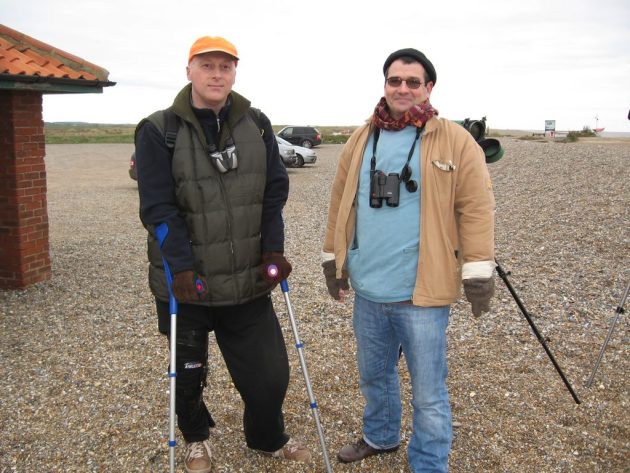
Are there any aspects of birding you would like to learn more about (e.g., bird families, birding destinations, people involved in birding)?
Of course, there’s always something new to discover and learn. “I’m like an old golf-ball—I’ve had all the white paint knocked off me long ago. Life can whack me about now, and it can’t leave a mark. But a sportin’ risk, young fellah, that’s the salt of existence. Then it’s worth livin’ again.” (Athir Conan Doyle, 1912)
10,000 Birds
Why do you write for 10,000 Birds, other than for the fame and glory?
Before 10,000 Birds, I wrote a birding blog in Serbian (at B92 portal), where I had far more readers than there were birders in my and neighboring countries. The best-read post reached over 30,000 readers – so I thought: this country is too small for me. And that is how I found myself at 10,000.
In an ideal world, who would you want to contribute to 10,000 Birds as well?
International bird guides, yet not with their official trip reports (sorry, guys, it reads like listening to a politician spilling off his party agenda), but with a far more private angle.
End
Is there anything else you would like to share with the readers of 10,000 Birds – maybe an answer to a question we forgot to ask?
Being a former climber, I found a saying that makes sense to me, by Reinhold Messner, the Kenn Kaufman of mountain climbing: “Bolts are the murder of the impossible.” Now, in rock climbing, a bolt is a permanent anchor drilled into the rock as a form of protection (most bolts are self-anchoring expansion bolts).
Messner comes from a generation that mostly used pitons hammered into natural cracks by the lead climber and afterward hammered out by the second climber, leaving the rock face as pure as it was found. Bolts practically took the risk of a serious injury out of climbing. And, without risk, they forever changed the set of climbers’ minds. Without the risk, you can achieve just about anything. But the question remains, have you really achieved it then?
It is an overreliance on technology. What would be the birding equivalent of a bolt? Playback. Some birds are not meant to be found; they remain the reason to come back again, to keep on birding, to keep on… Playback is the murder of the impossible.



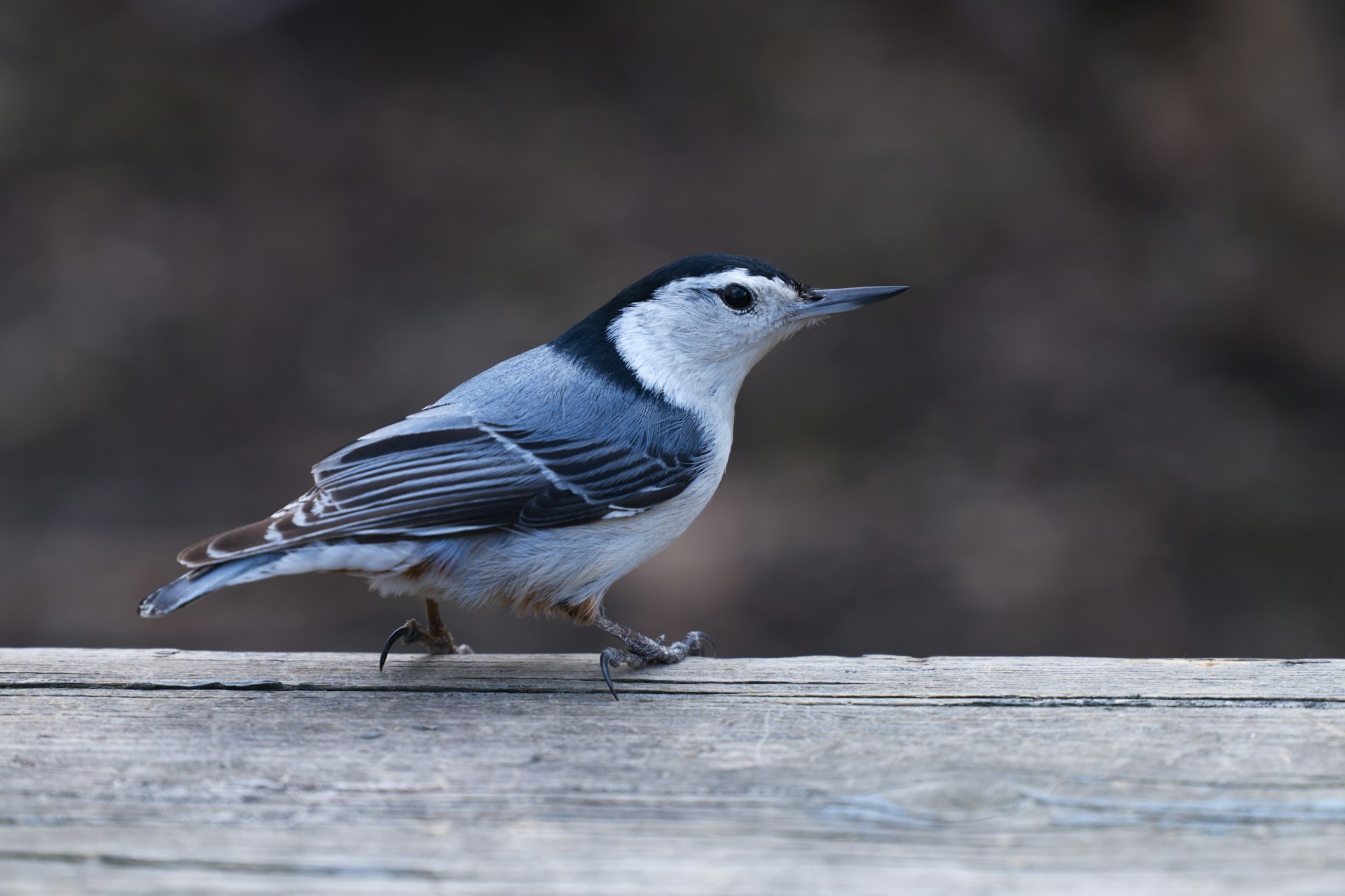
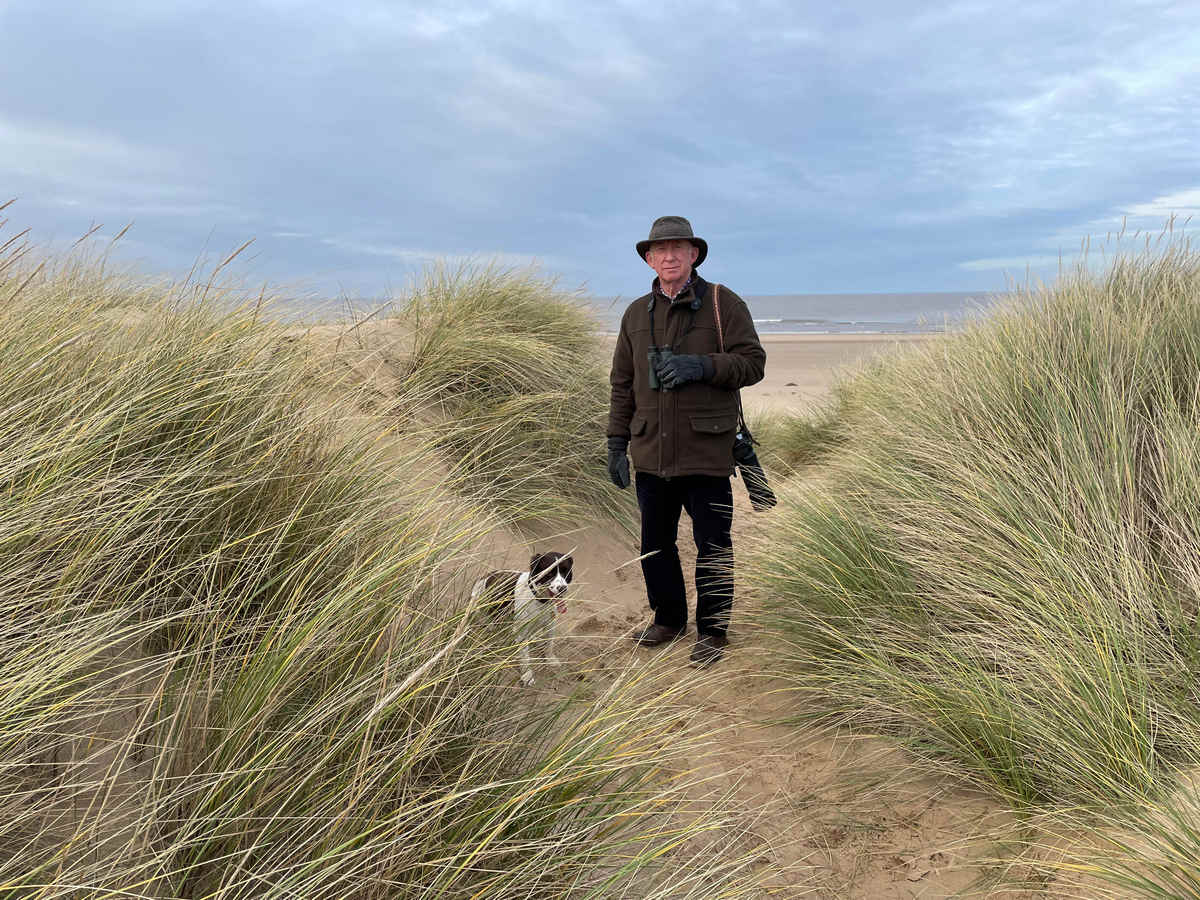
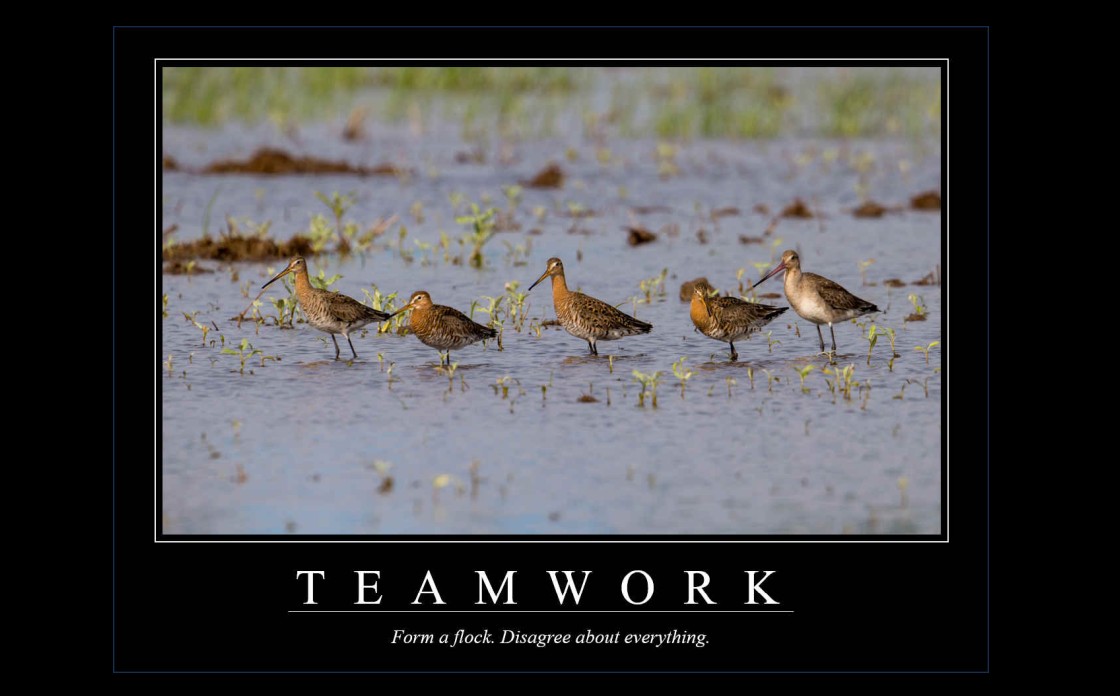

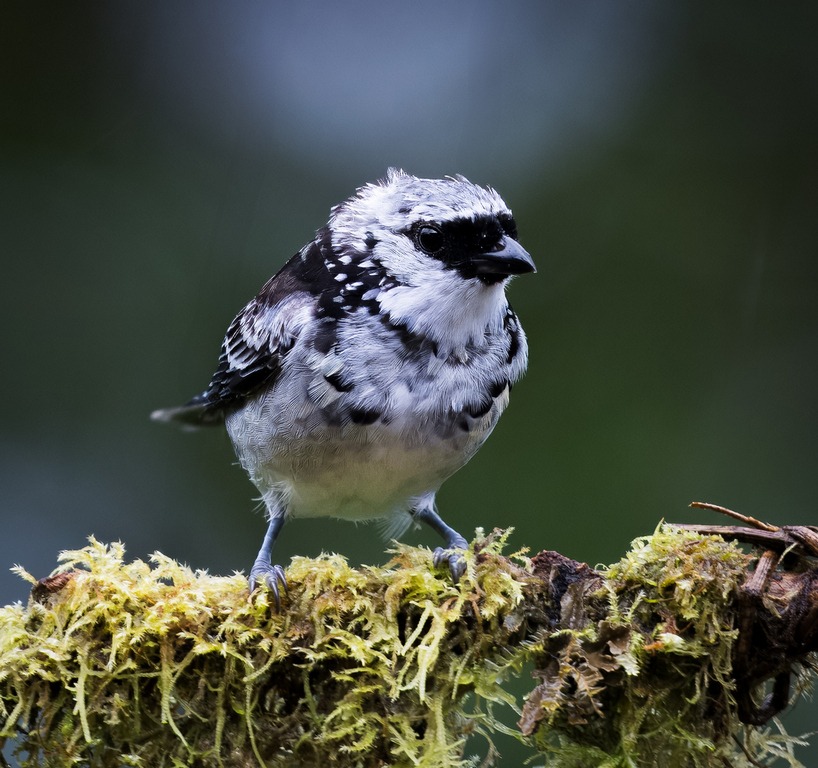















 English (US) ·
English (US) ·  French (CA) ·
French (CA) ·